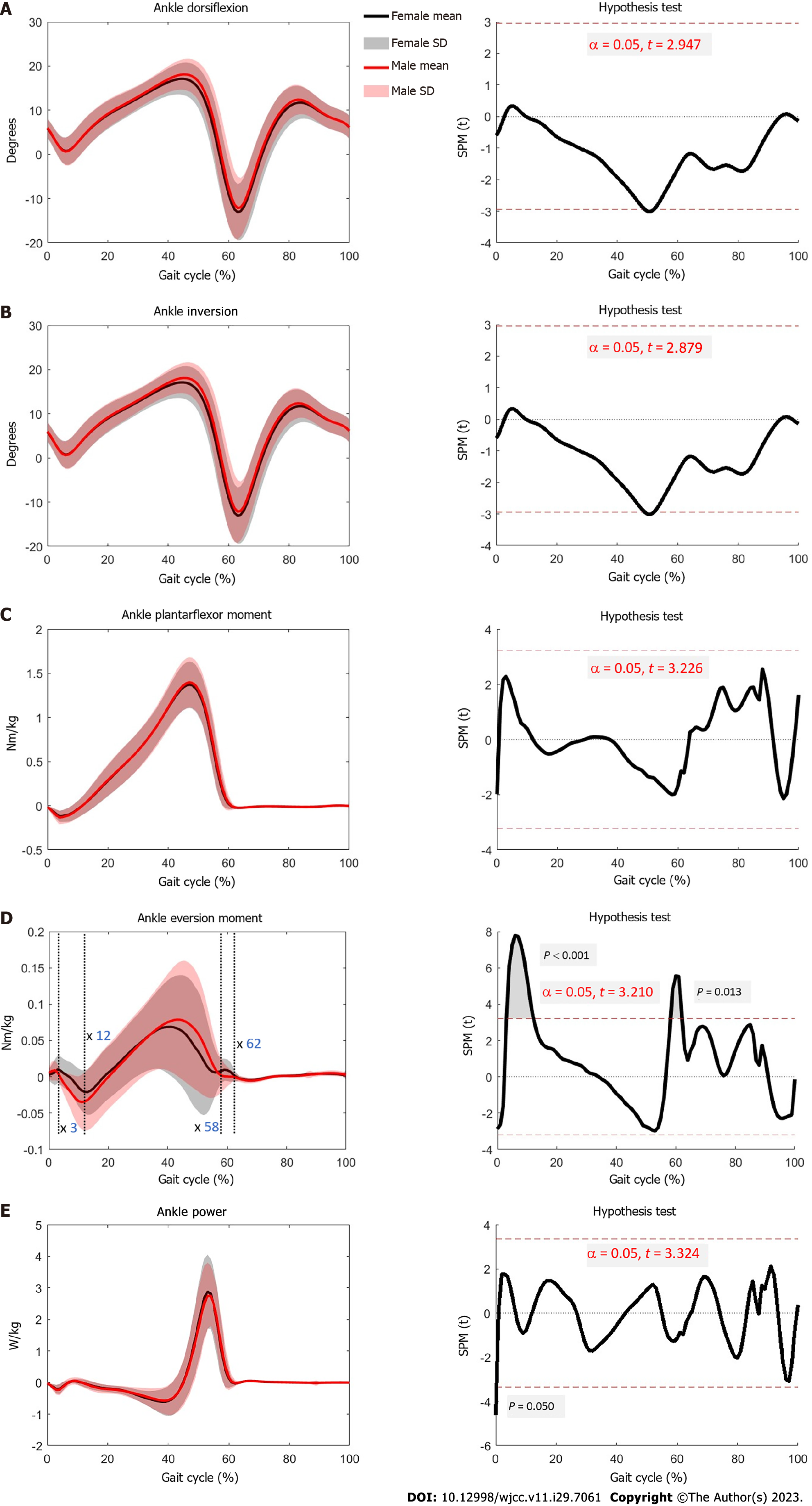Copyright
©The Author(s) 2023.
World J Clin Cases. Oct 16, 2023; 11(29): 7061-7074
Published online Oct 16, 2023. doi: 10.12998/wjcc.v11.i29.7061
Published online Oct 16, 2023. doi: 10.12998/wjcc.v11.i29.7061
Figure 4 Joint angle, moment and power of ankle.
A: Angle of ankle dorsiflexion and plantarflexion movements for males and females, with the horizontal axis representing a complete gait cycle, and the vertical axis representing the angles of dorsiflexion and plantarflexion. Positive values indicate dorsiflexion, whereas negative values indicate plantarflexion. Statistical Parametric Mapping compared the differences between males and females throughout a complete gait cycle, and differences with P < 0.05 were considered statistically significant; B: Angle of ankle inversion and eversion movements for males and females, with the horizontal axis representing a complete gait cycle, and the vertical axis representing the angles of inversion and eversion. Positive values indicate inversion, while negative values indicate eversion; C: Plantarflexor and dorsiflexor moments of the ankle joint for males and females, with the horizontal axis representing a complete gait cycle, and the vertical axis representing the magnitude of the moment. Positive values represent plantarflexor moment, whereas negative values represent dorsiflexor moment; D: Eversion and inversion moment of the ankle joint for males and females, with the horizontal axis representing a complete gait cycle, and the vertical axis representing the magnitude of the moment. Positive values represent eversion moment, whereas negative values represent inversion moment; E: Ankle power for males and females, with the horizontal axis representing a complete gait cycle, and the vertical axis representing the magnitude of power. Positive values represent power generation, whereas negative values represent power absorption. SPM: Statistical parametric mapping.
- Citation: Yu JS, Zhuang C, Guo WX, Chen JJ, Wu XK, Xie W, Zhou X, Su H, Chen YX, Wang LK, Li WK, Tian K, Zhuang RJ. Reference values of gait parameters in healthy Chinese university students: A cross-sectional observational study. World J Clin Cases 2023; 11(29): 7061-7074
- URL: https://www.wjgnet.com/2307-8960/full/v11/i29/7061.htm
- DOI: https://dx.doi.org/10.12998/wjcc.v11.i29.7061









